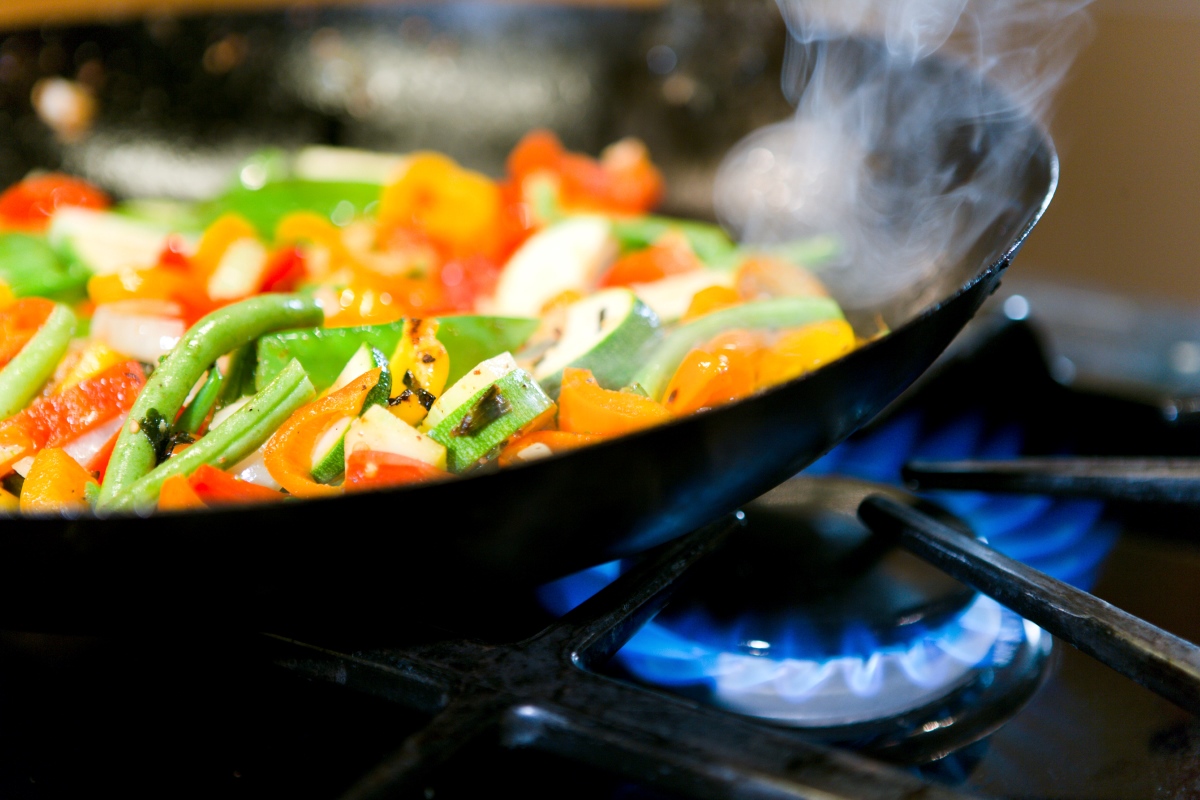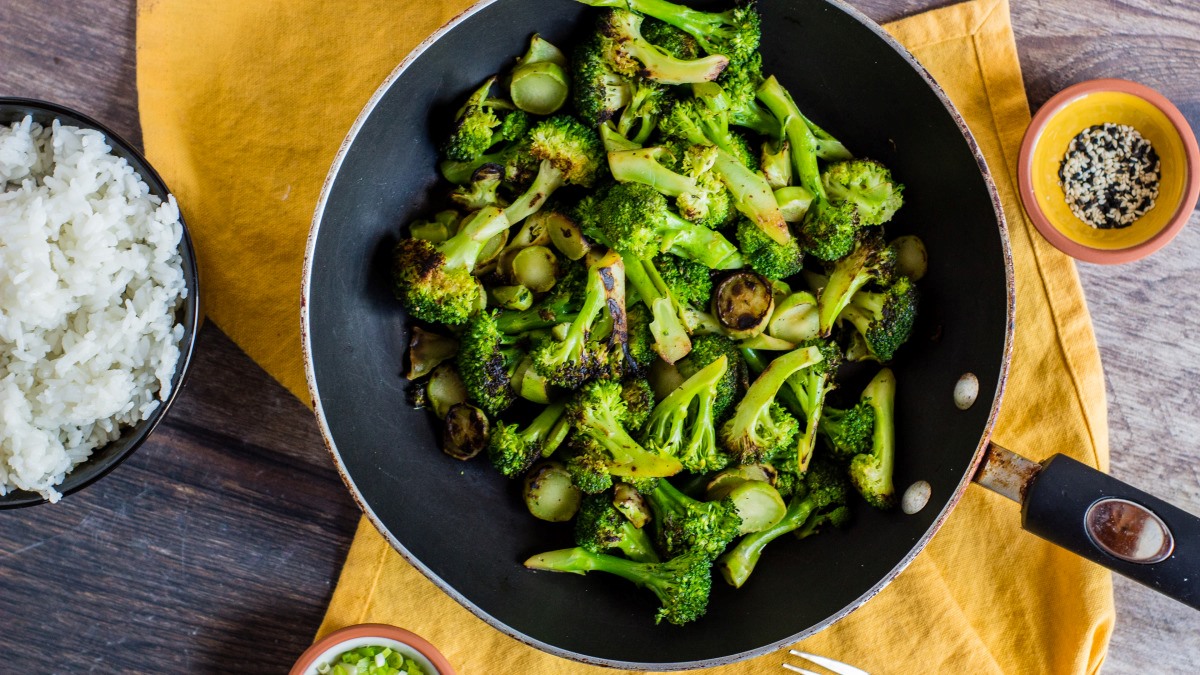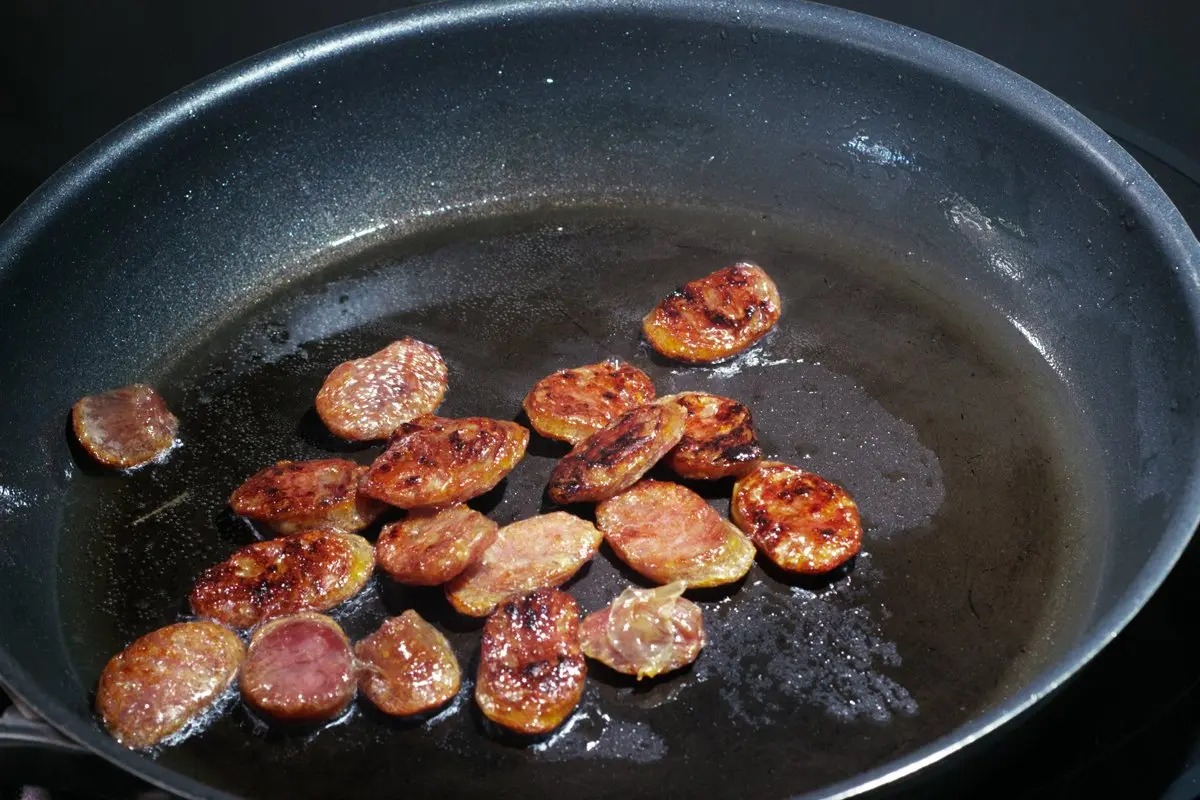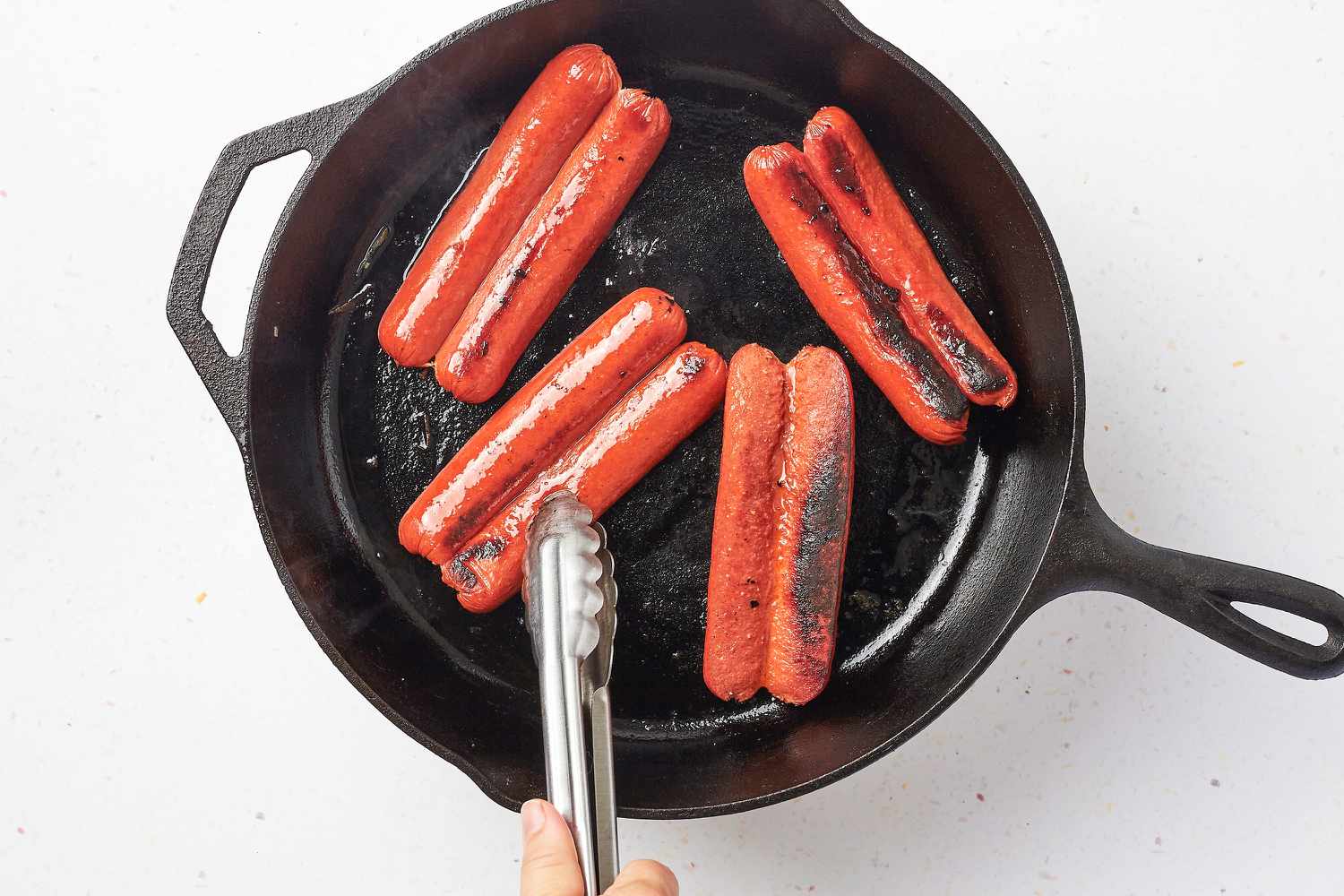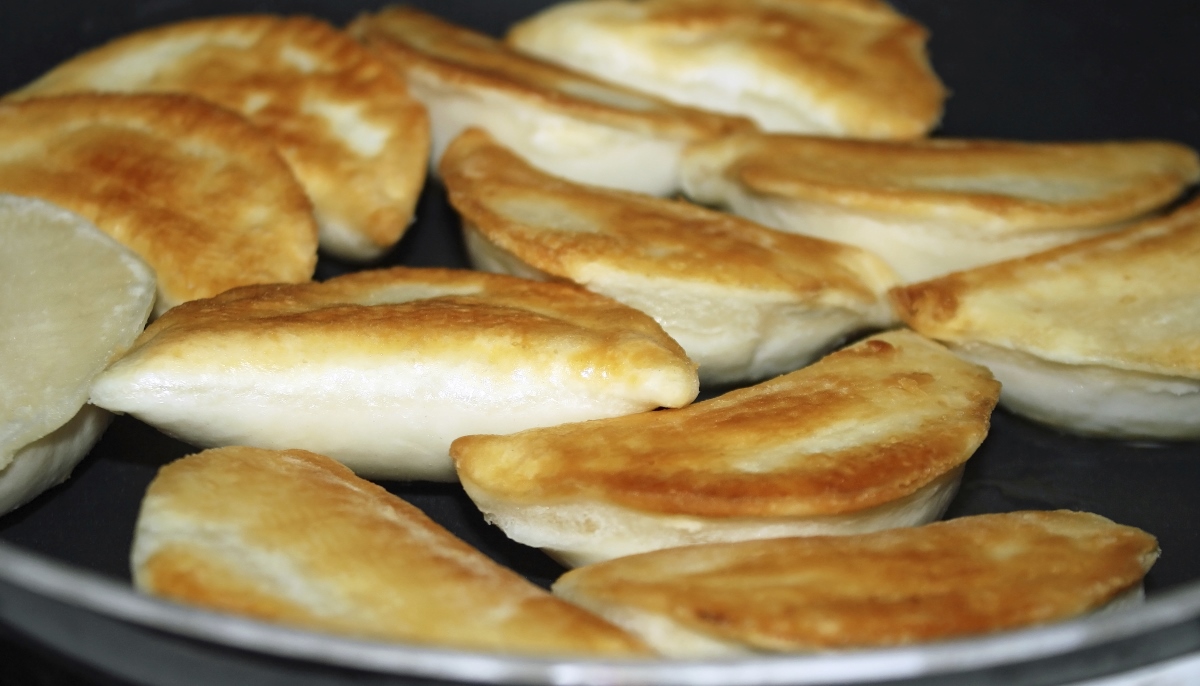Pan frying beans is a simple yet delightful way to bring out their natural flavors and add a crispy texture that many enjoy. Whether you're working with green beans, kidney beans, or black beans, the method remains largely the same. This technique involves heating oil in a pan, adding your beans, and cooking them until they reach your desired level of crispiness. Seasoning plays a crucial role, transforming the beans from a humble side dish to a savory, mouth-watering component of your meal. Let's dive into the steps to perfectly pan-fry beans, ensuring they become a regular in your culinary repertoire.
Gather Your Ingredients
- Fresh green beans, 1 pound, ends trimmed
- Olive oil, 2 tablespoons
- Garlic, 2 cloves, minced
- Salt, ½ teaspoon
- Black pepper, ¼ teaspoon
- Lemon juice, from 1 lemon
- Red pepper flakes, optional, ½ teaspoon for heat
Essential Tools for Perfect Pan-Fried Beans
- Skillet or frying pan
- Spatula
- Measuring spoons
- Kitchen knife
- Cutting board
- Colander (for rinsing beans)
- Mixing bowl (optional, for seasoning beans)
- Stove
Pan frying beans enhances their flavor. Start with a hot skillet, add oil, then beans. Cook until golden, stirring often. Season as desired. Perfect for adding a crispy texture to meals.
The Benefits of Pan Frying Beans
Pan frying beans is a simple yet effective cooking method that infuses flavors deeply, creating a crispy texture outside while keeping the inside tender. This technique allows for the seasoning to adhere better, resulting in a more pronounced taste profile.
Using minimal oil, pan frying also offers a healthier alternative to deep frying, reducing the overall fat content without compromising on the beans' natural flavors. It's a quick, easy way to elevate a humble ingredient into a savory side dish or a protein-packed addition to meals.
Your Step-by-Step Pan Frying Guide
-
Select beans: Choose fresh or canned beans. If using fresh, ensure they are thoroughly washed and trimmed. For canned beans, drain and rinse them to remove excess sodium.
-
Prepare ingredients: Gather olive oil, garlic, salt, and pepper. These will enhance the flavor of your beans during pan-frying.
-
Heat pan: Place a skillet over medium heat. Add enough olive oil to lightly coat the bottom of the pan, preventing the beans from sticking.
-
Add beans to pan: Once the oil is hot, carefully add your beans to the skillet. Spread them out to ensure they cook evenly.
-
Season beans: Sprinkle salt and pepper over the beans. If desired, add minced garlic for extra flavor. Stir everything gently to combine.
-
Cook beans: Let the beans cook undisturbed for a few minutes until they start to brown on one side. Then, stir or toss them to ensure all sides get evenly cooked.
-
Adjust heat: If the beans are cooking too quickly or the garlic is browning too fast, reduce the heat to medium-low. This prevents burning and ensures even cooking.
-
Test for doneness: Beans are ready when they are golden brown and tender. Taste a bean to ensure it's cooked to your liking.
-
Serve immediately: Once done, remove the beans from the pan and serve them hot. They make a great side dish for a variety of meals.
Mastering the Art of Pan-Fried Beans
Pan-frying beans is a simple yet transformative cooking technique that elevates this humble ingredient to new heights. With just a few key steps, you can unlock rich flavors and textures that make beans not just a side dish but a standout component of any meal. Remember, the secret lies in choosing the right beans, ensuring they're properly prepared, and getting that pan just hot enough to create a deliciously crispy exterior while keeping the inside tender. Experiment with different seasonings and herbs to find your perfect match. Whether you're a seasoned chef or a kitchen newbie, mastering pan-fried beans is a skill that'll serve you well, adding a nutritious and tasty twist to your culinary repertoire. So, grab that skillet and let's make those beans sizzle!
All Your Questions Answered
Can I use canned beans for pan-frying?
Absolutely! Canned beans work great for this method. Just make sure to drain and rinse them thoroughly before tossing them into the pan. This step helps get rid of excess sodium and improves the beans' texture.
What kind of oil should I use for frying beans?
You'll want to go with an oil that has a high smoke point, like vegetable oil, canola oil, or avocado oil. These options will let you crank up the heat without worrying about the oil smoking too much.
How do I know when the beans are done frying?
Look for a golden-brown color and a slightly crispy exterior. This usually means your beans are perfectly fried. Also, giving them a taste is a foolproof way to check if they've hit the right texture and flavor.
Can I add spices or herbs to the beans while frying?
Definitely! Adding spices or herbs can elevate the flavor significantly. Garlic powder, cumin, chili powder, or fresh herbs like cilantro or parsley are fantastic choices. Just sprinkle them in while the beans are cooking.
Is it necessary to soak dried beans before frying them?
If you're starting with dried beans, soaking them overnight will speed up cooking time and help make them more digestible. However, for pan frying, it's best to fully cook your soaked beans by boiling them until tender before frying.
What's the best way to avoid beans sticking to the pan?
First off, make sure your pan is well-heated before adding the oil. Then, let the oil heat up until it's shimmering but not smoking. This creates a non-stick surface. Also, resist the urge to stir the beans too soon; give them time to form a crust and they'll release more easily.
Can I pan fry beans as part of a larger dish?
Pan-fried beans can be a fantastic addition to many dishes. Whether you're tossing them into a salad for some extra protein or using them as a topping for tacos, they add a delightful texture and flavor. Just fry them separately and add them to your dish towards the end of cooking.
Was this page helpful?
Read Next: How To Pan Fry Hamburger Steak



